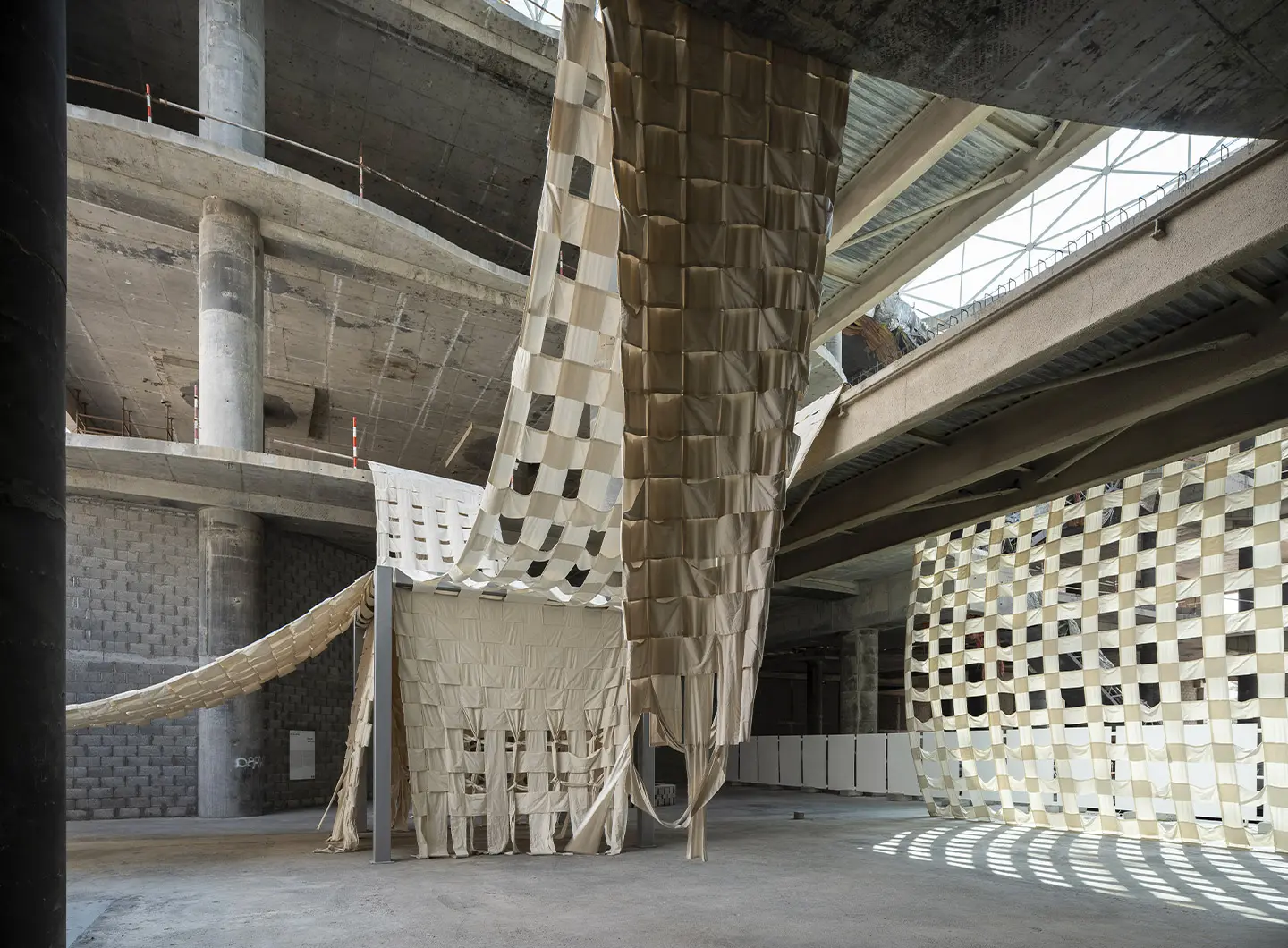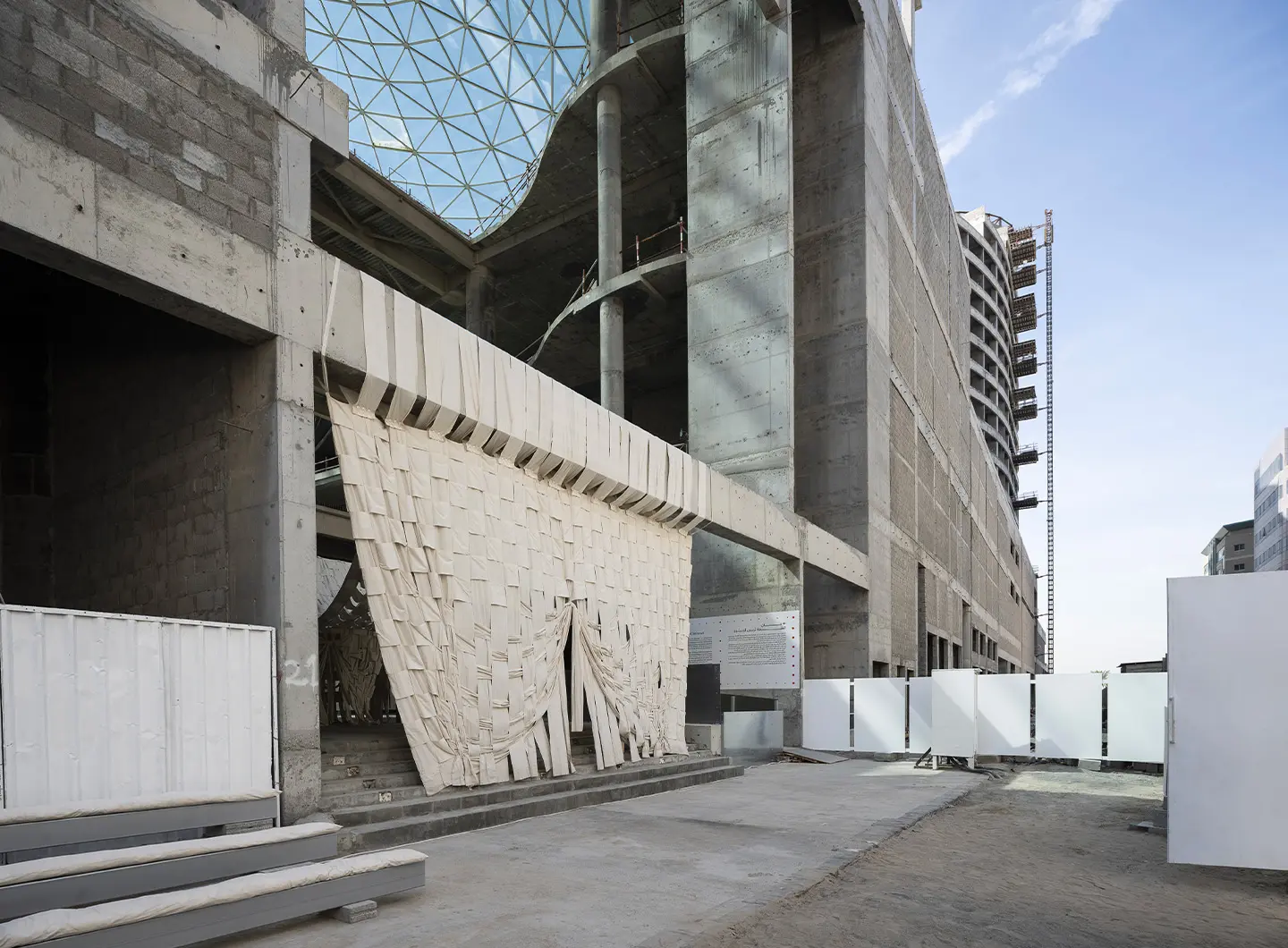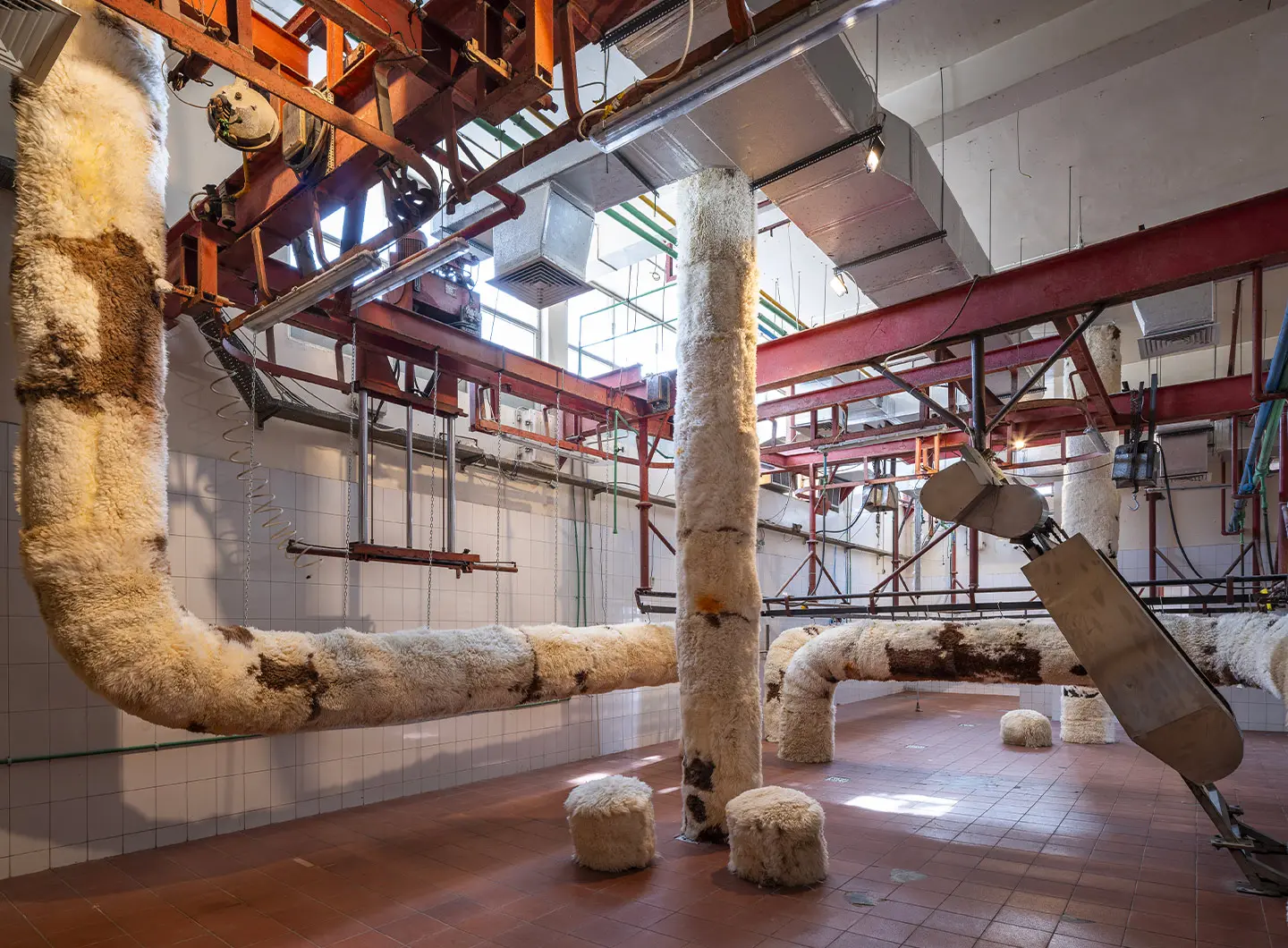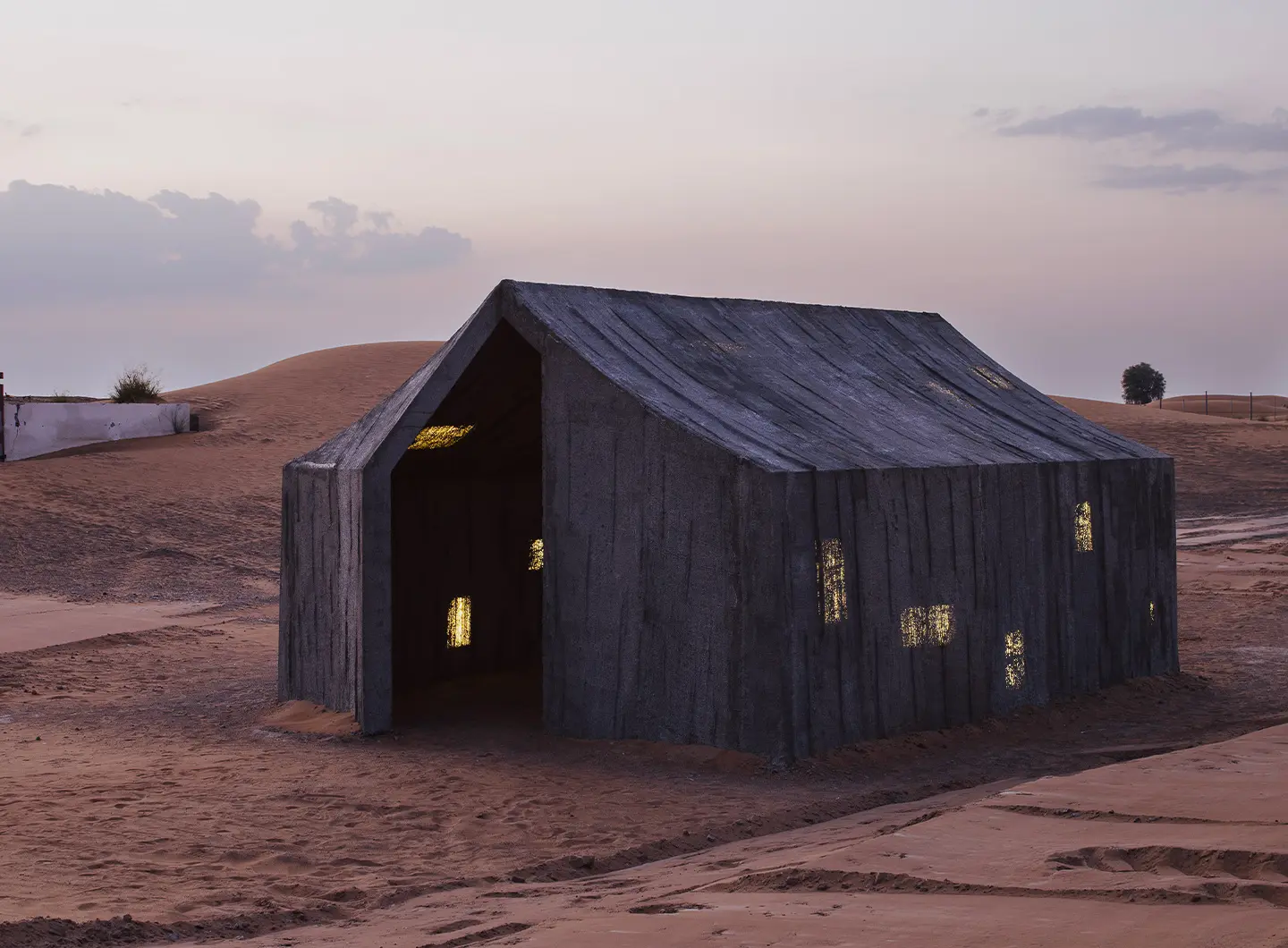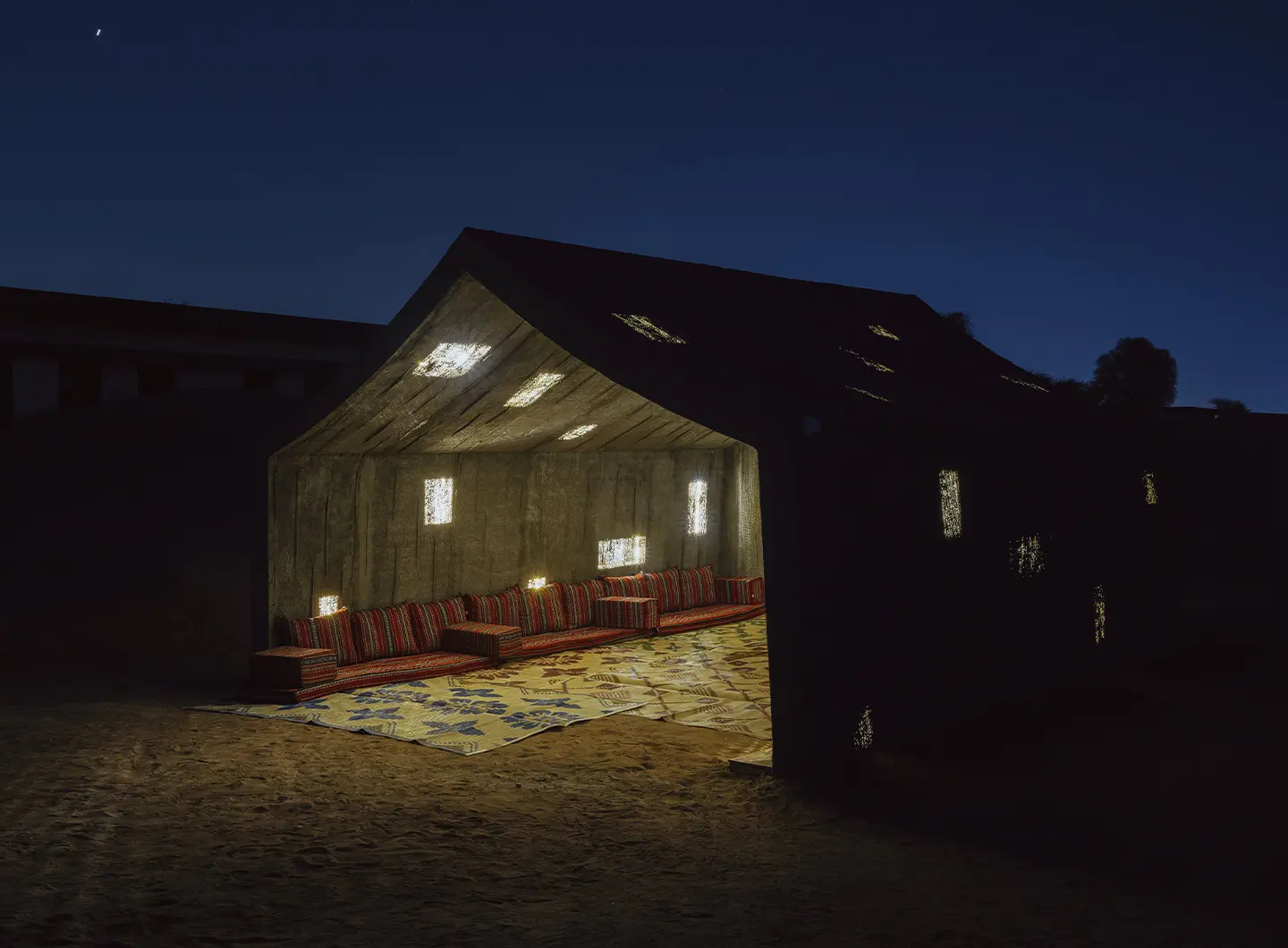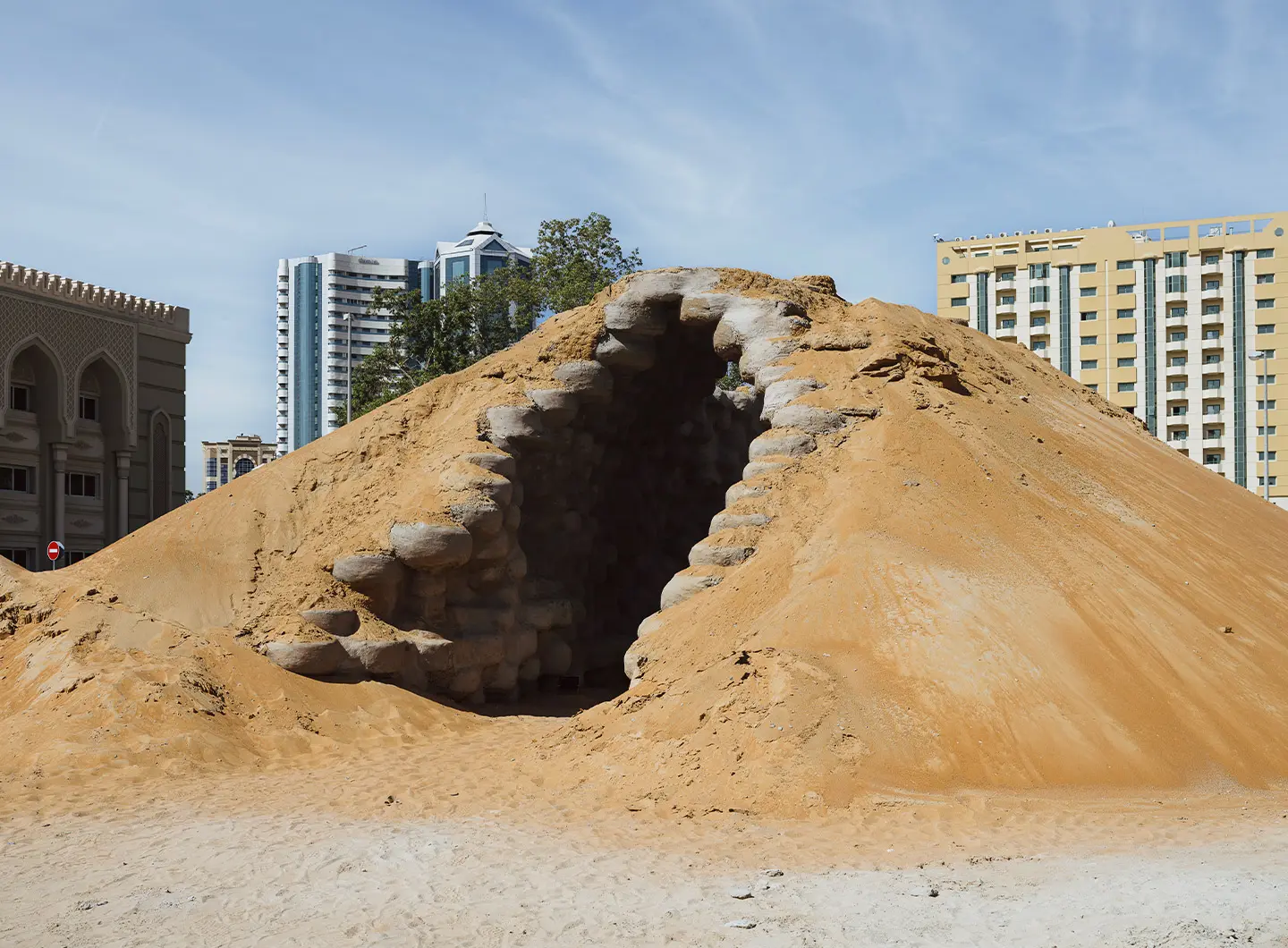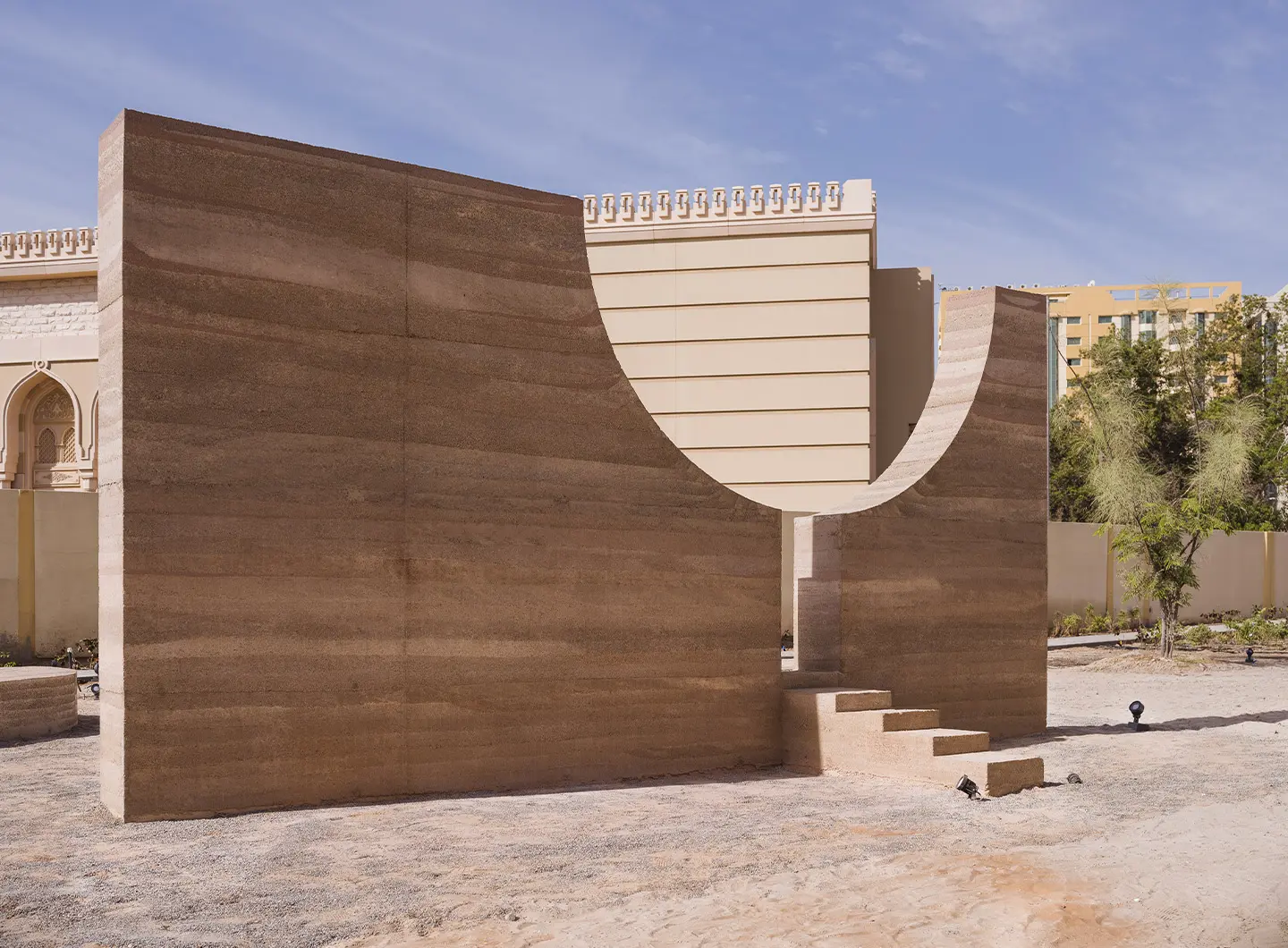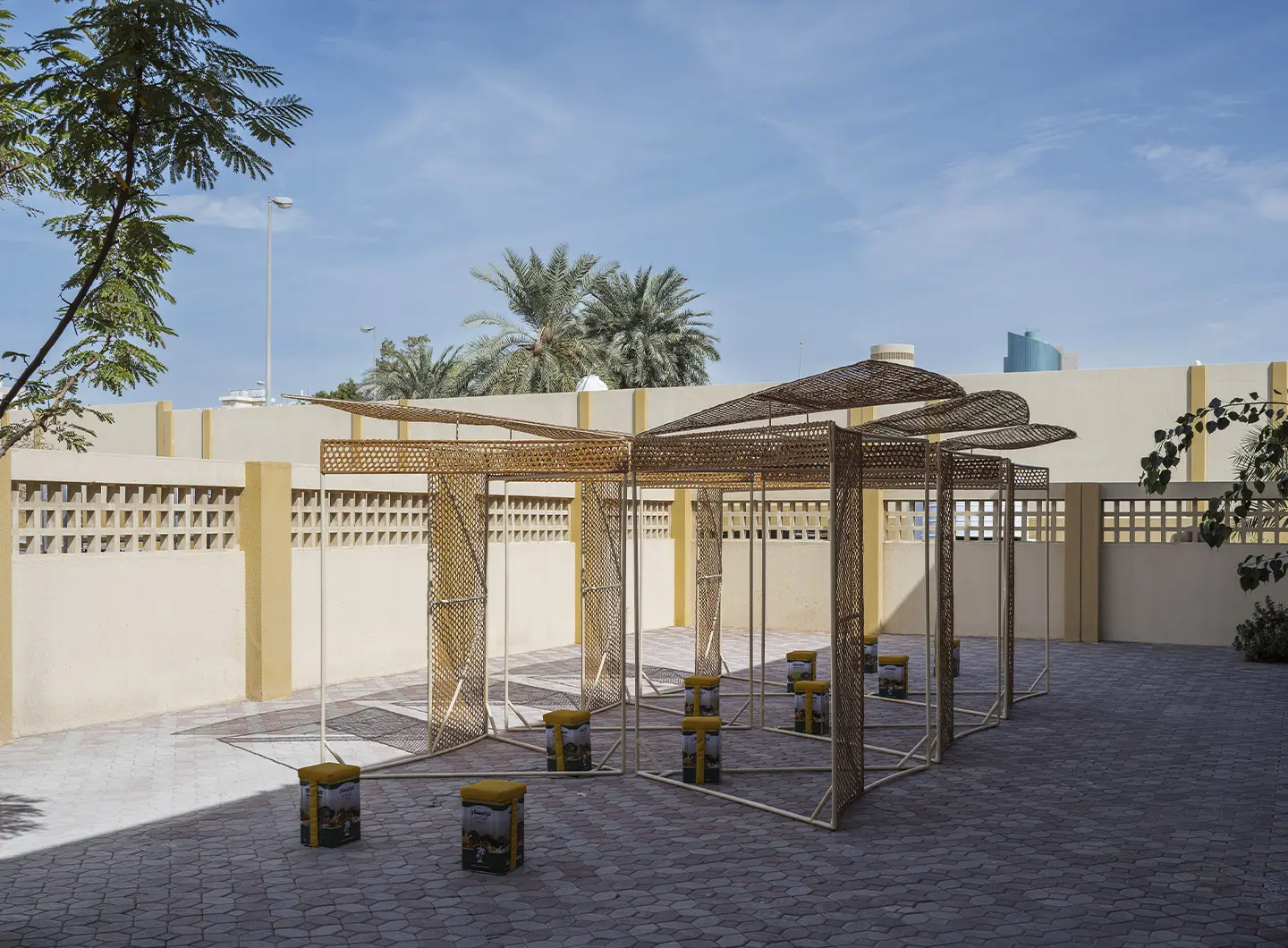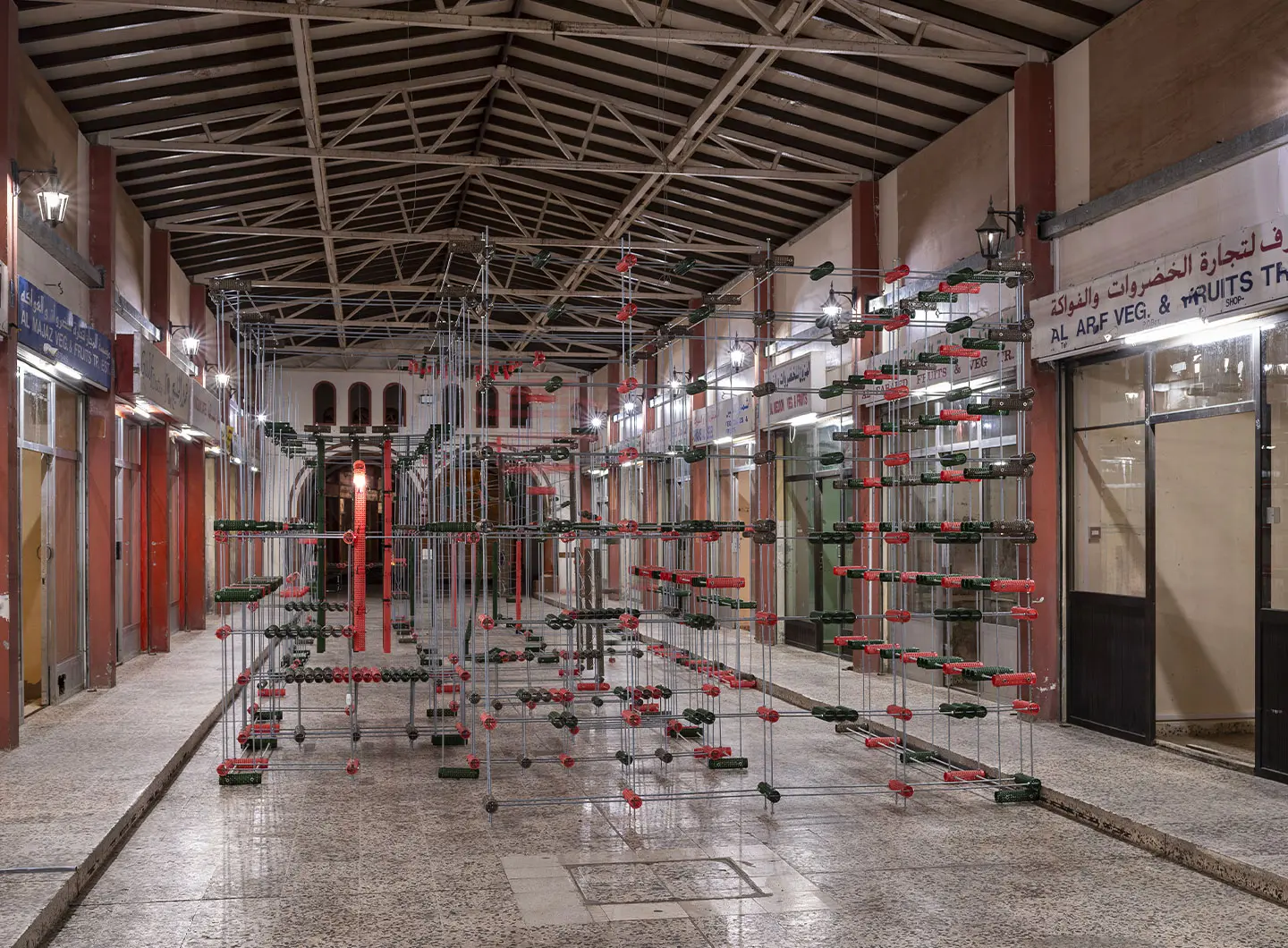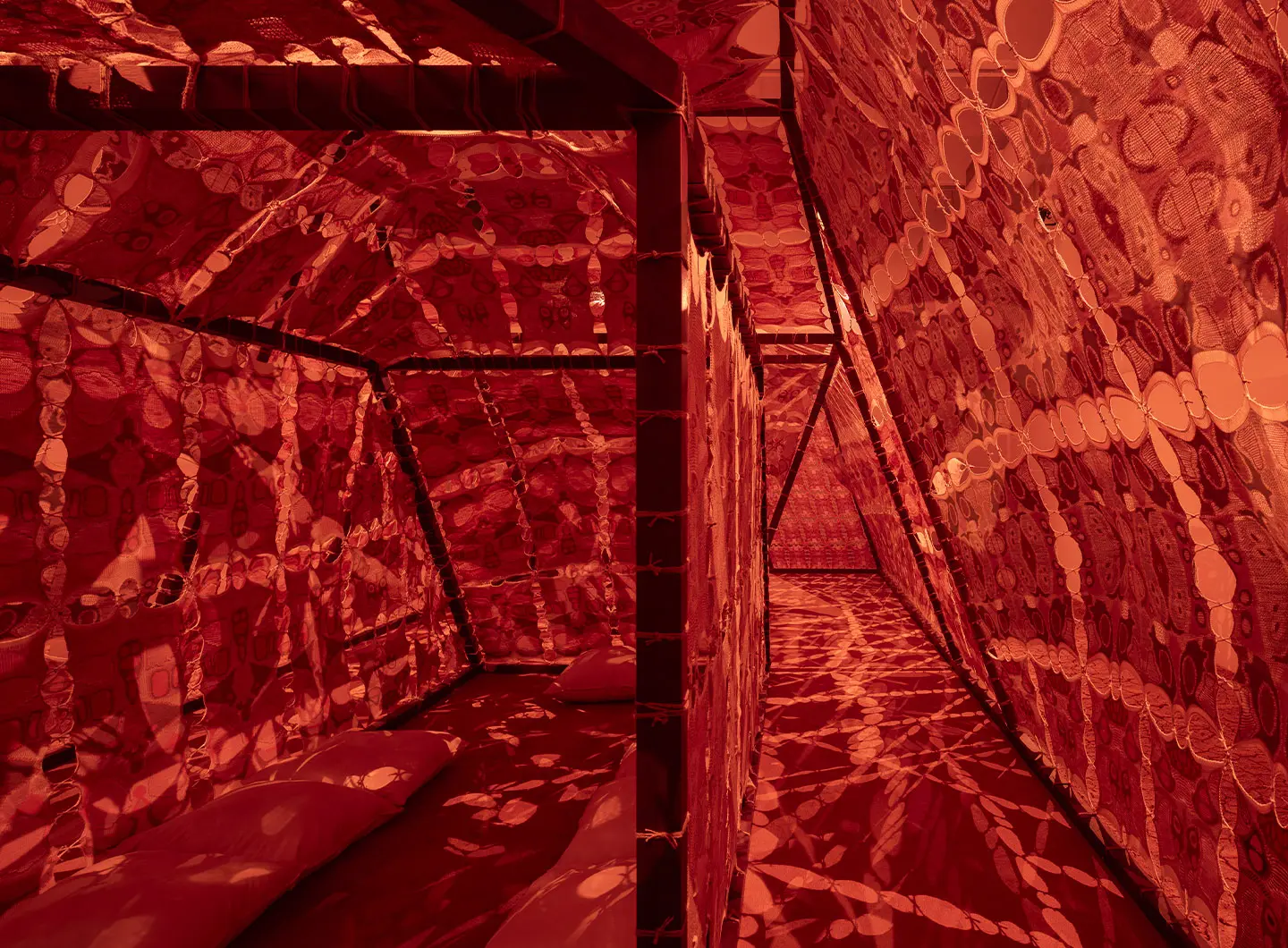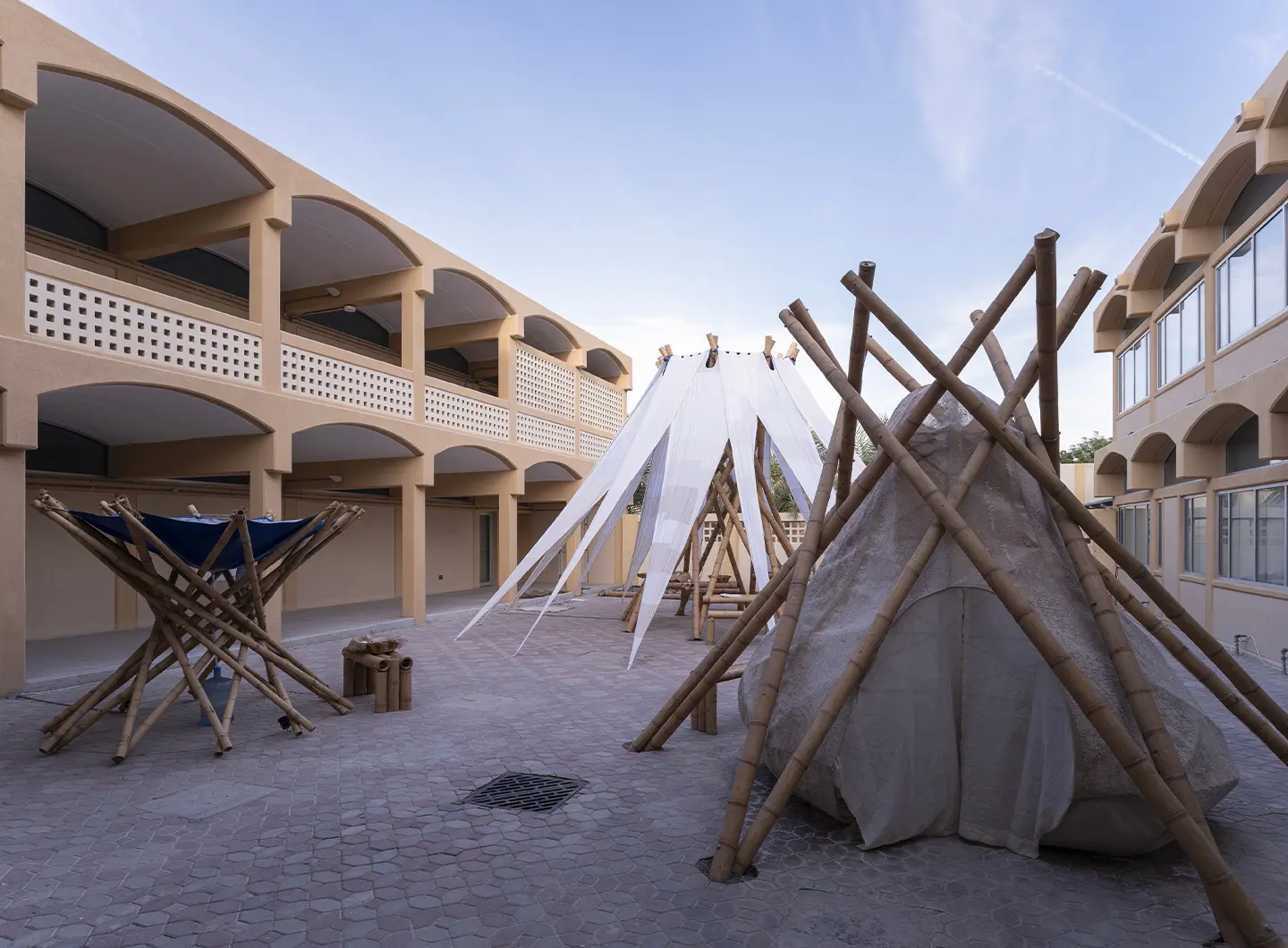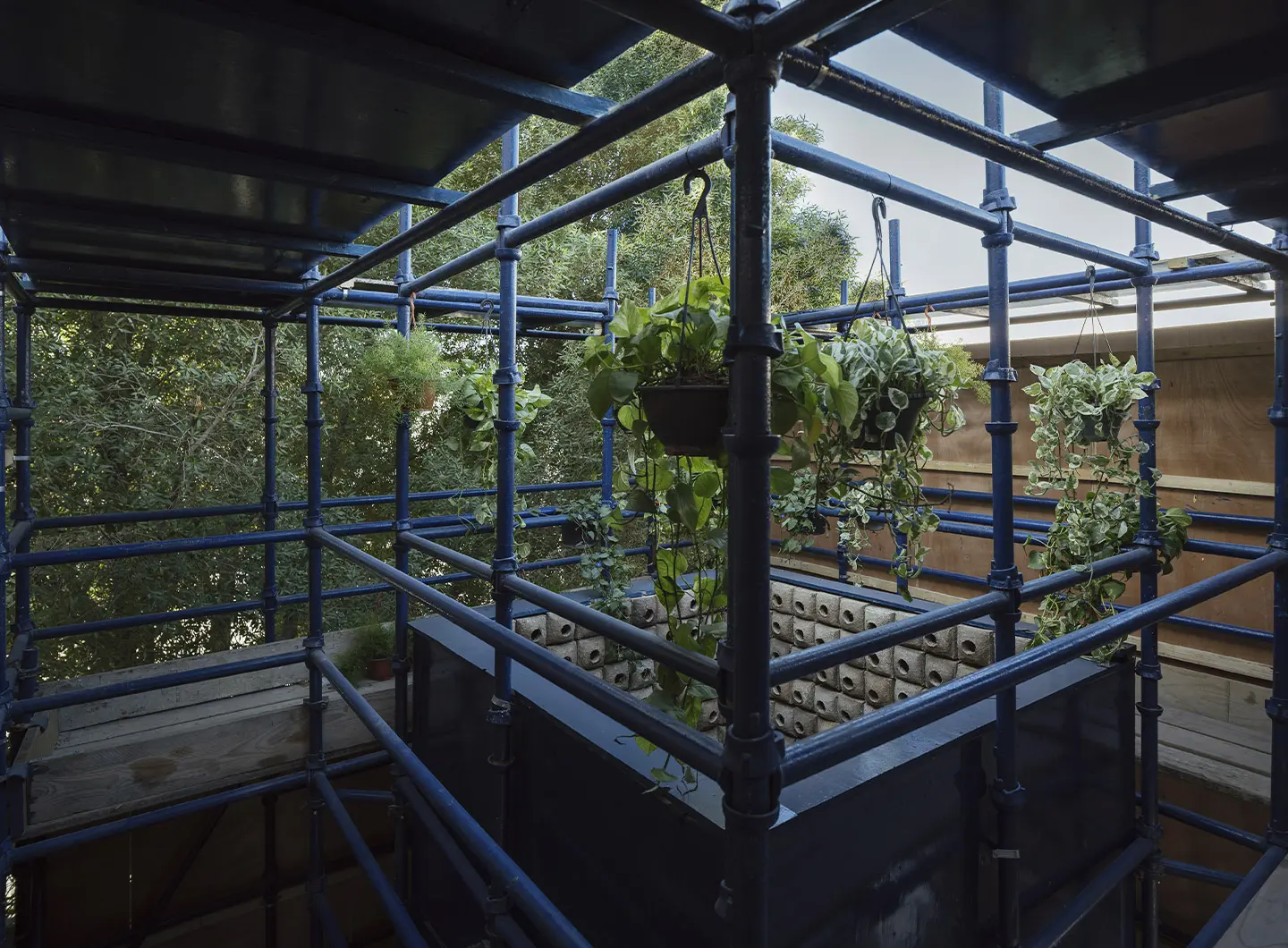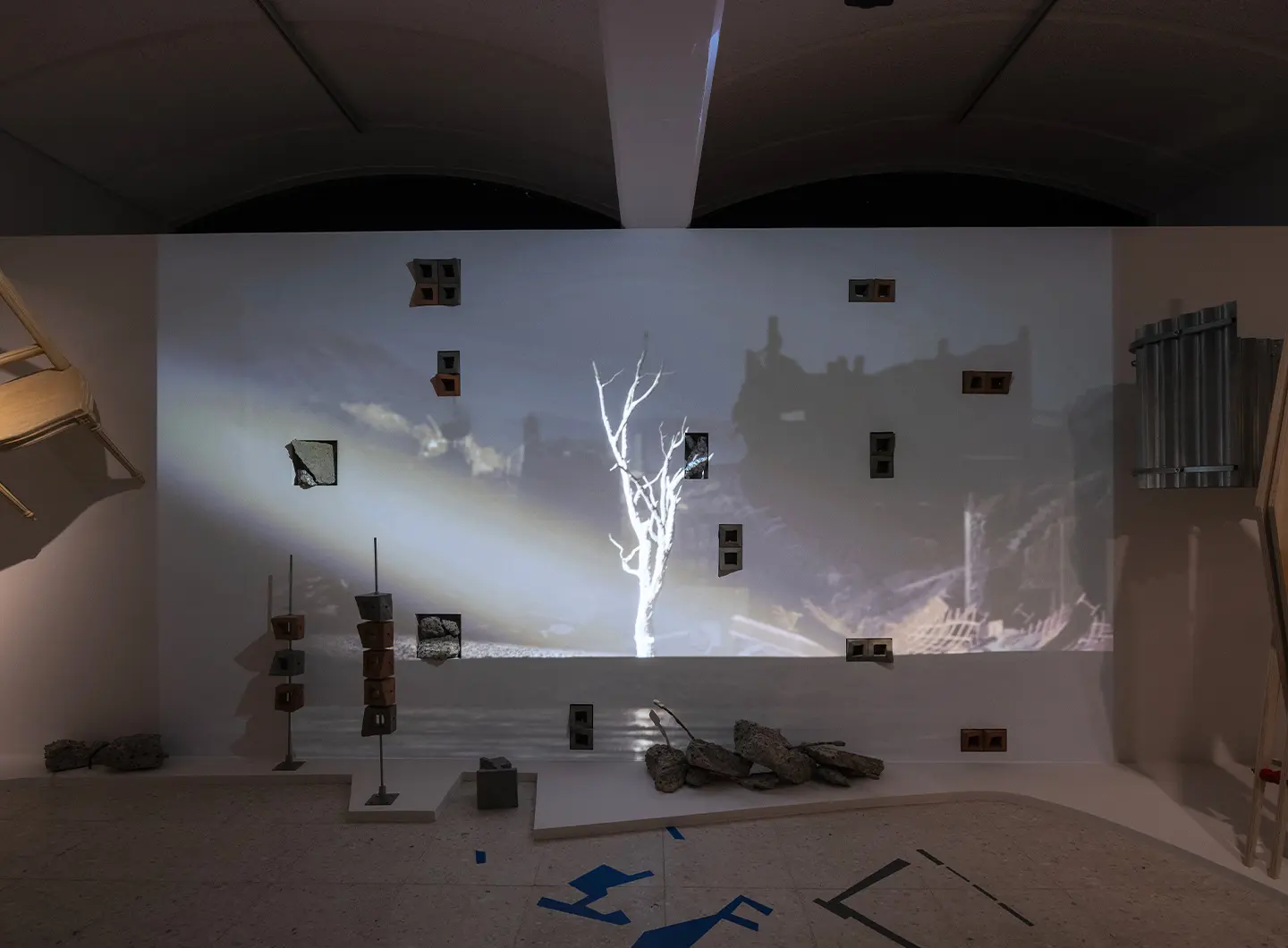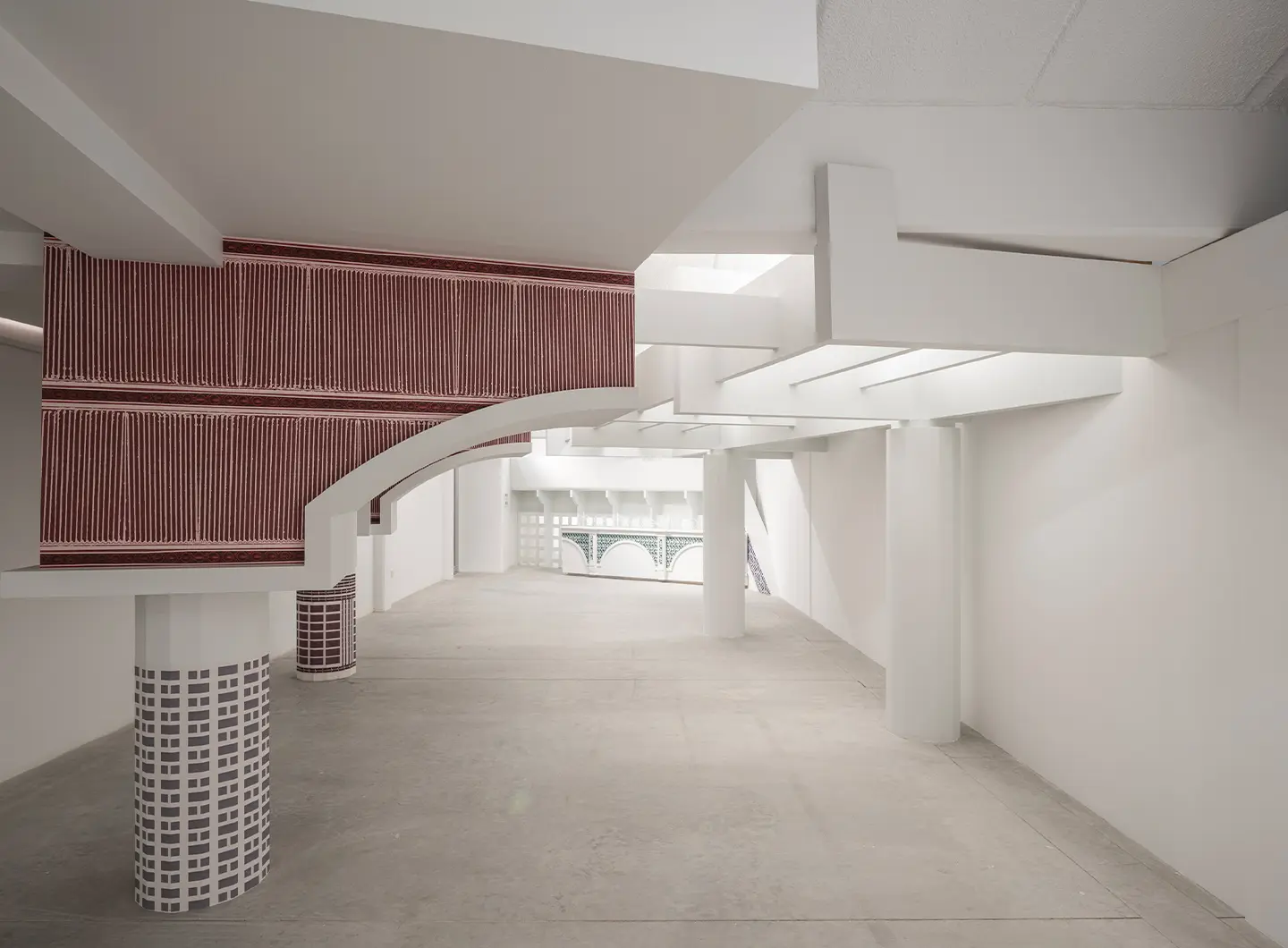From BIG to David Chipperfield, Frank Gehry to Snøhetta: a world tour of the best buildings set to open in 2026
At the Sharjah Triennial, sustainable architecture comes from the South
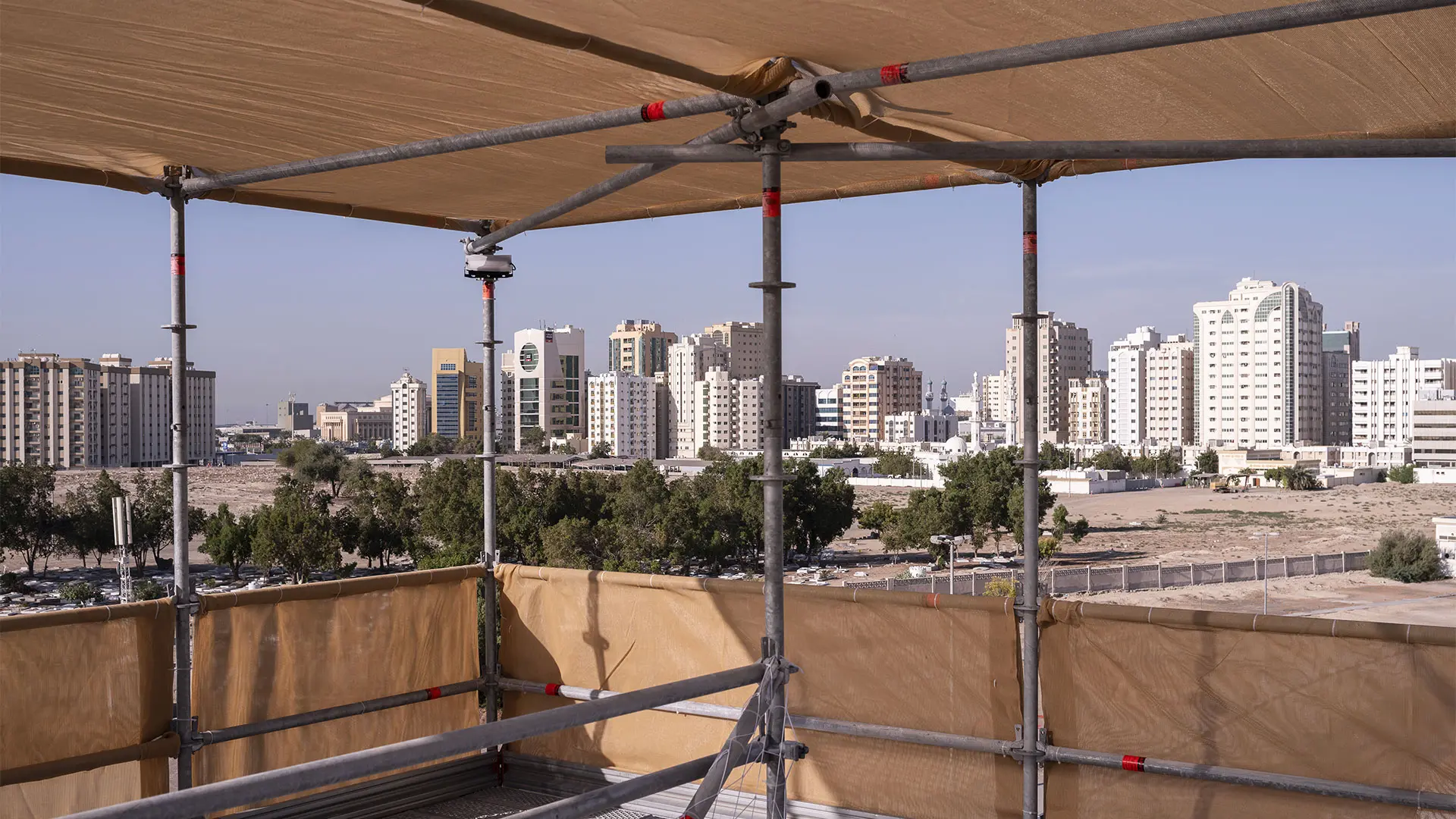
RUÍNA Architecture, Time Transitions, 2023 - Ph. Danko Stjepanovic. Courtesy Sharjah Architecture Triennial
The emirate’s second architecture exhibition asks us to change our perspective by presenting voices and projects for the future born from a culture of reuse, recovery, innovation and collaboration
Is it really possible to talk about sustainable architecture among the air-conditioned skyscrapers and oil pipelines of the United Arab Emirates? According to the organizers of the second Sharjah Architecture Triennial, entitled The Beauty Of Impermanence: An Architecture of Adaptability, this is perhaps one of the places where it makes the most sense today to show different models of development. As well as being one of the few able to showcase concrete proposals from the South of the world.
The Architecture Triennial is the brainchild of the son of the Emir of Sharjah, Khalid Al Qasimi, who created a platform for enhancing the value of architecture and urban planning in Asia, the Middle East and Africa, and organized the first exhibition in 2019. Following his sudden death, his legacy was taken over by his twin sister, Sheikha Hoor Al Qasimi. The former director and president of the Sharjah Art Foundation, with which she has succeeded in making the small emirate an emerging artistic hub on the global scene within just a few years, Al Qasimi has surrounded herself with a gifted team of international collaborators to make this second edition a space for reflection on a more sustainable future, devised by those who live and work daily in conditions of economic scarcity, whether material or environmental.
The curator, the Nigerian architect and designer Tosin Oshinowo, selected 29 participants from 25 countries in the Global South, including Central and South America. “From the start we worked with a very positive and optimistic energy and I’m really proud of the result. Our ideas converged around the need to change our outlook, since the current model based on abundance and endless growth is an impossible model. This has produced a collective conversation and works that I hope will influence our approach to architecture. The way I design will definitely never be the same again.”
Oshinowo, who is one of Nigeria’s most accomplished architects, was a student of Lesley Lokko, curator of the Venice Biennale. The two prepared the exhibitions at the same time, sharing some guests, but with two different and complementary sensibilities: more academic in Venice, more pragmatic in Sharjah.
A multi-site Triennial
The artists, designers and architects presented their projects, often rooted in the local context, at six different locations. Five of these are in the city. The Al Qasimiyah School, an old disused complex expertly converted into the headquarters of the Triennial, which housed a large part of the exhibition. The magnificent old Al Jubail vegetable market, built in the early 1980s as a long, curved, naturally ventilated covered arcade. The city’s old slaughterhouse, which houses the museum of the Anthropocene curated by the Kenyan studio Cave_bureau, with an immersive project by the Beirut-based Honduran textile artist Adrian Pepe. The tree-lined open space wedged into an industrial area of the city, where Papa Omotayo and Eve Nnaji (Lagos) have erected We Rest at the Bird’s Nest: a platform embodying 2300 nests shaped from plant waste found on site, offering an oasis of refreshment to both migratory birds and the migrant workers who populate the area. Finally, the Sharjah Mall, an immense unfinished shopping mall that the territorial design studio Limbo Accra has chosen to continue its reflection on the potential of unfinished spaces in West Africa and other countries of the Global South.
The last location, perhaps the most evocative, is located in the desert, an hour’s drive from the city. The ghost village of Al Madam today is half-buried in sand. Locals come here to watch the sunset or picnic at evening on the dunes. In the 1970s, it was at the centre of a state project to settle the Bedouin populations, which failed miserably, since it took no account of either their needs or environmental factors. This is where Sandi Hilal and Alessandro Petti (DAAR) have pitched their Concrete Tent. An installation created in the Palestinian refugee camps to symbolize the paradox of permanent temporariness, and which acquired a further significance during the inauguration of the Triennial, at the same time as the Israeli intervention in the Gaza Strip.
Zero waste goal
The projects were mainly built out of natural, recycled and local materials. Like the Saudi architect Sumaya Dabbagh’s enveloping spiral EARTH TO EARTH: two curved walls made of mud bricks creating a central space where people can linger, evoking the concept of circular materiality and the close link between permanence and impermanence. The Ghanaian multidisciplinary studio Hive Earth also used a wall made of earth and organic residues recovered on site to modulate a convivial space. By breaking down the main block, they combined functionality and aesthetics with a minimal environmental impact. The Indian practice Wallmakers worked with 1,425 tires recovered from the emirate’s landfills, desert sand and mud to build a 3-Minute Corridor. A passageway that, in addition to creating a pleasant microclimate, invites us to reflect on our waste production. 1425 is significantly the number of tires discarded worldwide every three minutes.
Other extremely interesting projects are the mobile modular kiosk created by the Nigerian designer Nifemi Marcus-Bello, who has modified a project made using techniques and materials widespread in nearby Benin, adapting it to those typical of the Emirates, and the air purifier made from fabric and salt, a homemade desalination device devised by Henry Glogau and Aleksander Kongshaug. Raw Threshold is a pergola sunscreen made from wood and palm mats by the Ecuadorians of Al Borde. It was designed to deteriorate naturally, but has proved so successful that the Sharjah Art Foundation is considering extending its duration, imagining artistic interventions on the parts of the structure that will be affected by time.
“This Triennale did not have the ambition to be carbon-neutral,” explains Tosin Oshinowo, aware that even transporting the participants from the four corners of the earth and using the air-conditioned shuttles that regularly connect the exhibition locations make the feat impossible. “However, we worked a lot on the choice of materials used for the installations, starting from the idea that everything will have to go back to where it came from. The designers of Space Caviar, who devised the exhibition’s scenography with a zero-waste approach, had proposed using sand. Once there, they realized that it would be too complex and they managed to adapt to the context. They approached local construction companies and industries and persuaded them to rent us all the necessary materials.”
Projects that make a difference
The issue of reuse and waste is at the heart of the work of other guests, such as the installation-workshop by the Ugandan designers from BUZIGAHILL - Return To Sender. In addition to reselling in the countries of the North the clothes made by recycling the second-hand garments that flood markets in the South, and Africa in particular, BUZIGAHILL seeks to promote awareness of the perverse effects of fast fashion. Like the impact it has on the populations and ecosystems of the countries where tons of poor-quality used clothes end up every year.
In its attempt to change the narrative and perspective on architecture, the Sharjah Triennial also made an original decision. The organizers allowed the Ecuadorian studio Natura Futura to use the funds allocated to finish one of their projects: the construction of the first modern and sustainable houseboat for the community living on the Babahoyo River. Traditional floating housing systems are part of Ecuador’s cultural heritage, but they have almost become extinct, partly because they are seen as unhealthy and as a threat to the river’s biodiversity by local administrations, which have favoured the resettlement of inhabitants in new neighbourhoods, so uprooting them. This project, and the fact that it has been selected for an international Triennial, has not only concretely improved the life of a family but also had a political impact, prompting the government to draft a bill that takes into account both the need to protect the river and those who live on it and by it.
“When they pitched it to us,” Tosin Oshinowo recalls, “I thought, ‘This is a fantastic idea!’ It seemed to me a really fine way to appropriate the objectives of this Triennale, sowing worldwide the seeds of awareness that can make a difference through architecture.”
The second edition of the Sharjah Architecture Triennial will be welcoming visitors free of charge until 10 March 2024 in six different locations.

A Matter of Salone: the new Salone communication campaign
From a reflection on humans to matter as meaning: the new Salone communication campaign explores the physical and symbolic origins of design, a visual narration made up of different perspectives, united by a common idea of transformation and genesis


Salone 2025 Report: The Numbers of a Global Event
Data, analyses, and economic, urban, and cultural impacts. The second edition of Salone del Mobile’s “Milan Design (Eco) System” Annual Report takes stock of a unique event and consolidates the fair’s role as the driving force behind Milan as the international capital of design



 Salone Selection
Salone Selection
